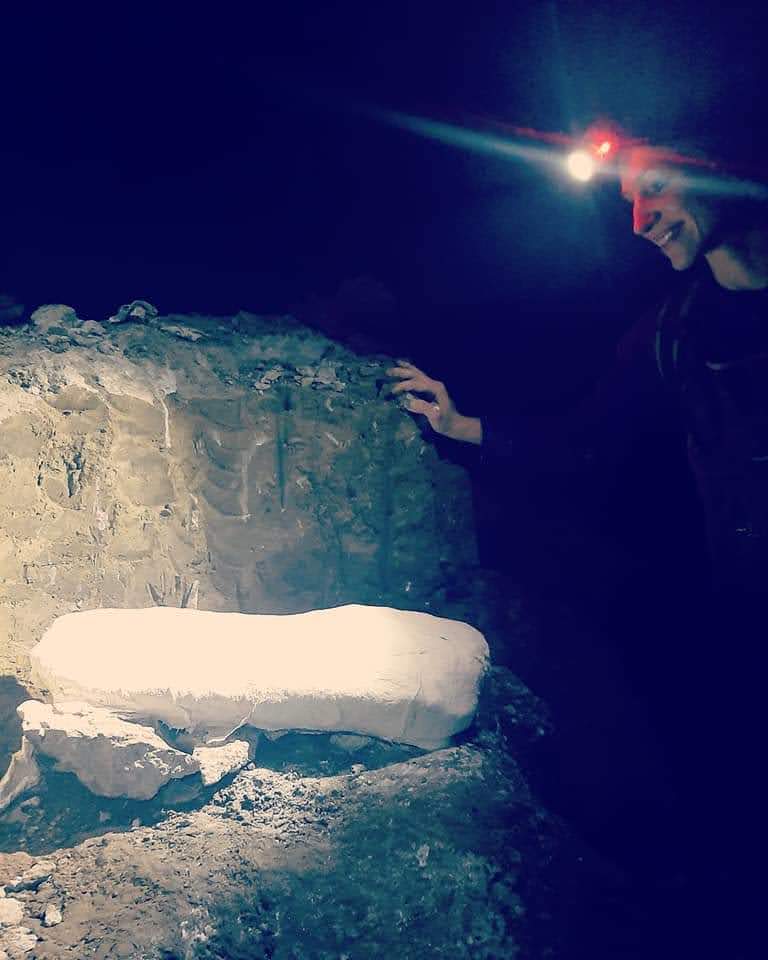
We were out scouting a new construction site when I noticed a section of thin bone material jutting out of the wall of the retention pond which I immediately recognized to be jaw bone. I paused for a moment and then giggled with excitement and decided to set my things down and get to work. The first thing I needed to do was check the area for other signs of bone to see if I could find any clues as to what the animal might be or if there might be any pieces of the bone laying somewhere nearby.
The tractor had struck the animal while digging the pond and I knew firsthand that there could be fragmented bone laying in the limestone at the base of the wall and I would need to collect the material before getting to work on the jaw bone. Within a few minutes I located a vertebrae that appeared to be associated about 3 feet from the jaw and a few badly fragmented bone shards laying at the base of the wall. I carefully put the bone shards away and pulled out my kit – chisel, rock hammer, and shovel – and set to work.
The first thing I needed to do was remove the overburden from above the animal to determine how far back into the wall the jaw went – I used my shovel and rock hammer to do this part. Next, I needed to trench out an area around the jaw so as to create a pedestaled block that I would be able to safely remove. Since there was no other bone laying near the jaw I was able to move relatively quickly through this part of the process.
Once the trench was in place, it was time to cover the block with plaster of paris strips. The strips hardened within 15 minutes and provide stabilization to the block so that when flipped, the material is held in place and the structural integrity of the fossil is preserved. For this part I had the assistance of my husband Joshua Basak. Suddenly it began to rain and Josh and I began our race against the clock to get the specimen removed in fear that the weather would soon take a turn for the worse.
Next, it was time to pull out the power tools – time for the SawZall. Using a 12″ reciprocating blade on a 20v SawZall, I placed a cut line roughly 4″ below the settling line of the bone so as to ensure that I would not cut through any of the animal. Next, we flipped the block and applied the plaster of paris to the under-side of the block, finally sealing it and making it ready to carry out of the pit.
As I picked up the tools and loaded the bag, the rain began to come down harder and we realized we only had a few minutes left to get the block to the truck. Without hesitation, Josh reached down and scooped the block into his arms and began the 200 yard journey across the floor of the hard-pan bottomed retention pond through 2 feet of water. Nervously I followed behind him carrying the 80 pound bag of tools, praying he made it to the truck before the sky let loose completely. Within minutes we arrived safely at the truck and were on our way home to begin the next part of the journey.
Stay tuned for the Waipatiid of the Ashley part 2 and as always – Until next time, Happy Hunting!
